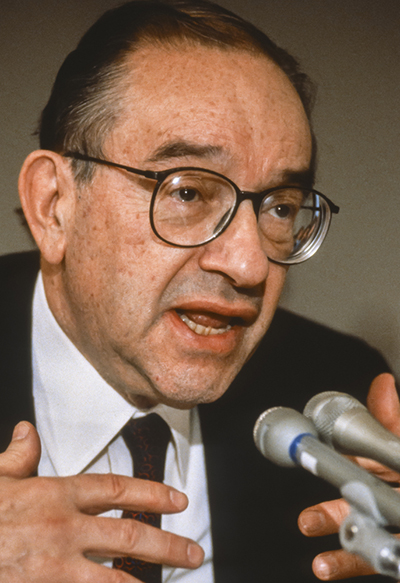As most people know, economists are good at rewriting history. We have seen this in the last few years as the collapse of the housing bubble and the ensuing downturn has been turned into one of those unavoidable tragedies that could not have been prevented. After all, no one could have imagined that house prices wouldn’t keep going up forever or that anything bad might happen if prices actually fell.
In reality it was possible, and in fact easy, for those who pay attention to data to know that house prices would fall and that the consequences for the economy would be very bad. But most discussions of the crisis treat it as a natural disaster like Hurricane Katrina, and absolve the economists in policy positions from any responsibility.
Unfortunately this sort of reinvention of history is more than norm than the exception. We are witnessing another example in the debate over the timing of Federal Reserve Board interest rate hikes.
In this debate, many economists are arguing that the Fed has to move aggressively to raise interest rates in order to head off inflation. Some believe that the unemployment rate will soon be too low, if it is not already, and that we will start to see inflation spiral upwards if the Fed doesn’t act quickly to slow the pace of job creation.
While there is no evidence for these sorts of claims – inflation is currently below the Fed’s target and it has been falling, not rising – it is important to ask about the basis for these inflation warnings from economists. In this respect, the history of the 1990s is very important.
In the early and mid-1990s, virtually all mainstream economists argued that the inflation rate would begin to spiral upwards if the unemployment rate fell much below 6.0 percent. There were some differences on the exact measure of this danger point. Most conservative economists tended to put the danger point above 6.0 percent, perhaps as high 6.4 percent. More liberal economists tended to view this floor unemployment rate as being somewhat below 6.0 percent, perhaps as low as 5.6 percent.
But there was very little disagreement about the basic point. We would have serious problems with inflation if the unemployment rate fell below this tipping point and the Federal Reserve Board should be prepared to raise interest rates to keep the unemployment from going too low. Even liberal economists like Paul Krugman and Janet Yellen, who was then a member of the Fed’s Board of Governors, argued for this position.
Remarkably, we had the opportunity to test this theory. Alan Greenspan, who was Fed chair in the 1990s, was not a mainstream economist and therefore did not accept that 6.0 percent, or anything like it, imposed a floor to the unemployment rate. He pushed and got a policy whereby the Fed allowed the unemployment rate to fall below 6.0 percent and to keep falling until there was clear evidence of inflation.
As a result of Greenspan’s policy, the unemployment rate fell below 5.0 percent in May of 1997, it crossed 4.5 percent in April of 1998, and was 4.0 percent as a year-round average in 2000. This allowed more than 5 million people to have jobs than would have been the case if Greenspan accepted the 6.0 percent floor and slammed on the breaks. It also allowed tens of millions of people to get pay increases, as we saw the first sustained period of broadly based wage gains in almost three decades.
And, these benefits disproportionately went to the most disadvantaged groups. To take one noteworthy example, the unemployment rate for African-American teens was 15 percentage points lower in 2000 than it had been when the overall unemployment rate was 6.0 percent back in 1994.
Furthermore, there was no increase in the inflation rate over this period. The inflation rate was lower in 2000 than it had been in 1995 when the unemployment rate first began to drop into the danger territory.
This history should be an important feature in the current debate on the Fed’s interest rate policy. The point is that virtually the whole profession got the economy completely wrong in the 1990s. Given this track record, why would anyone think they are now getting the economy right today?
When an economist confidently tells us that the unemployment rate can’t get below 5.4 percent, 5.2 percent, or 5.0 percent without causing the inflation rate to spiral upward, why should anyone have confidence in this assessment? The reporters covering the Fed should constantly be reminding their audience about the experience of the 1990s when virtually the whole profession got this question wrong. There is no reason to think that economists’ understanding of the economy is any better today than it was two decades ago, and people should know this.
Our most important fundraising appeal of the year
December is the most critical time of year for Truthout, because our nonprofit news is funded almost entirely by individual donations from readers like you. So before you navigate away, we ask that you take just a second to support Truthout with a tax-deductible donation.
This year is a little different. We are up against a far-reaching, wide-scale attack on press freedom coming from the Trump administration. 2025 was a year of frightening censorship, news industry corporate consolidation, and worsening financial conditions for progressive nonprofits across the board.
We can only resist Trump’s agenda by cultivating a strong base of support. The right-wing mediasphere is funded comfortably by billionaire owners and venture capitalist philanthropists. At Truthout, we have you.
We’ve set an ambitious target for our year-end campaign — a goal of $150,000 to keep up our fight against authoritarianism in 2026. Please take a meaningful action in this fight: make a one-time or monthly donation to Truthout before December 31. If you have the means, please dig deep.
